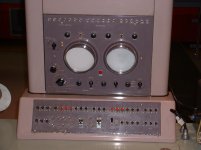Dwight Elvey
Veteran Member
Going Forth from the C of compile/load/debug cycles.
Say you want to run a PDP11 from your iPhone or what ever.
The ESP32 with WIFI can be a fun way to deal with such things. At the Maker Faire, Dr. Ting will run a workshop using the ESP32. It is not specific to classic computers but with a little imagination one can create various uses to be used with our clasic machines. If your going to the Maker Faire here in the Bay Area, this should be an interesting workshop.
Sunday 1:30 - 3:00pm - Zone 3
ESP32 WiFi Microcontroller Workshop
Chen-Hanson Ting
https://makerfaire.com/maker/entry/70167
Register at: $20
https://www.eventbrite.com/e/esp32-...-faire-bay-area-2019-registration-60628075205
Say you want to run a PDP11 from your iPhone or what ever.
The ESP32 with WIFI can be a fun way to deal with such things. At the Maker Faire, Dr. Ting will run a workshop using the ESP32. It is not specific to classic computers but with a little imagination one can create various uses to be used with our clasic machines. If your going to the Maker Faire here in the Bay Area, this should be an interesting workshop.
Sunday 1:30 - 3:00pm - Zone 3
ESP32 WiFi Microcontroller Workshop
Chen-Hanson Ting
https://makerfaire.com/maker/entry/70167
Register at: $20
https://www.eventbrite.com/e/esp32-...-faire-bay-area-2019-registration-60628075205

